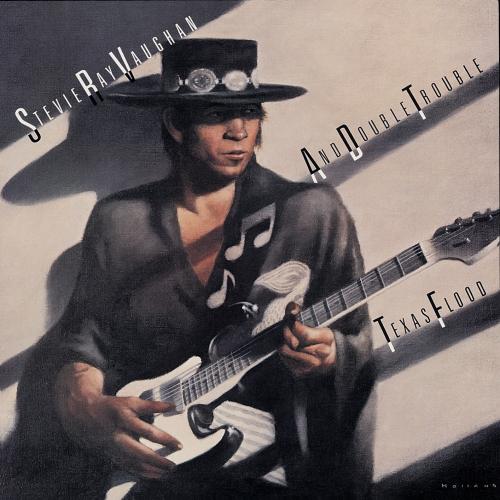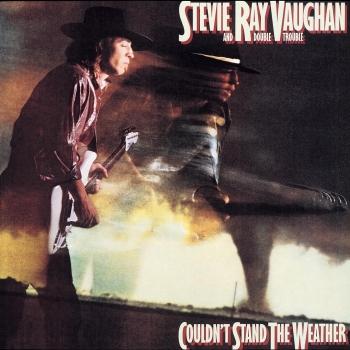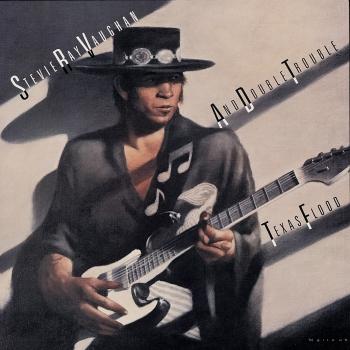
Texas Flood (Expanded Remastered Edition) Stevie Ray Vaughan & Double Trouble
Album info
Album-Release:
1983
HRA-Release:
25.01.2018
Album including Album cover
I`m sorry!
Dear HIGHRESAUDIO Visitor,
due to territorial constraints and also different releases dates in each country you currently can`t purchase this album. We are updating our release dates twice a week. So, please feel free to check from time-to-time, if the album is available for your country.
We suggest, that you bookmark the album and use our Short List function.
Thank you for your understanding and patience.
Yours sincerely, HIGHRESAUDIO
- 1 Love Struck Baby 02:22
- 2 Pride and Joy 03:39
- 3 Texas Flood 05:21
- 4 Tell Me 02:47
- 5 Testify 03:21
- 6 Rude Mood 04:39
- 7 Mary Had a Little Lamb 02:46
- 8 Dirty Pool 05:00
- 9 I'm Cryin' 03:43
- 10 Lenny 04:57
- 11 SRV Speaks 00:37
- 12 Tin Pan Alley (AKA Roughest Place in Town) (1982 Version) 07:37
- 13 Testify (Live) 03:54
- 14 Mary Had a Little Lamb (Live) 03:32
- 15 Wham! (Live) 04:20
Info for Texas Flood (Expanded Remastered Edition)
A live sensation on the Austin, Texas club circuit since the late 1970s, Stevie Ray Vaughan and Double Trouble–Stevie Ray (guitar, vocals), Tommy Shannon (bass) and Chris “Whipper” Layton (drums)–turned in a particularly memorable show at the Montreux Jazz Festival in Switzerland in 1982, catching the ears of David Bowie (who enlisted Stevie Ray for his Let’s Dance album) and Jackson Browne (who offered the band free use of his Los Angeles recording studio). Accepting the offer, Stevie Ray and Double Trouble recorded several tracks over a whirlwind three days (with day one mainly devoted to setting up equipment) with the resultant tracks grabbing the attention of legendary record producer John Hammond, who’d discovered and signed Bob Dylan, Count Basie, Billie Holiday, Leonard Cohen, Bruce Springsteen, Benny Goodman, Aretha Franklin and many others. Hammond brought Stevie Ray Vaughan and Double Trouble to Epic Records, which released the remastered tracks as Texas Flood in 1983.
Executive produced by John Hammond, the original Texas Flood album was produced by Stevie Ray Vaughan, Tommy Shannon, Chris Layton and engineer Richard Mullen.
An immediate and surprising success, Texas Flood peaked at #38 on the Billboard 200 while “Pride and Joy” shot up to #20 on the Mainstream Rock Tracks chart. The album’s title track was nominated for a Best Traditional Blues Performance Grammy while “Rude Mood” grabbed a Grammy nom for Best Rock Instrumental Performance. The album has sold more than 2 million copies since its original release.
Originally released on Epic Records on June 13, 1983, Texas Flood, an unapologetic apotheosis of electric blues supercharged for a post-disco post-punk pop world, introduced audiences to a soul-filled sound that existed outside both the mainstream and underground tastes of its era. The album opened the gates of a fiery blues resurgence with Stevie Ray Vaughan signature compositions like “Pride and Joy” and “Love Struck Baby” flowing naturally alongside covers of deep blues and R&B standards by Howlin’ Wolf, the Isley Brothers, Buddy Guy and Larry Davis.
„This legendary 1983 debut by the fallen torchbearer of the '80s-'90s blues revival sounds even more dramatic in its remixed and expanded edition. Stevie Ray Vaughan's guitar and vocals are a bit brighter and more present on this 14-track CD. And the newly included bonus numbers (an incendiary studio version of the slow blues "Tin Pan Alley" that was left off the original release, and live takes of "Testify," "Mary Had a Little Lamb," and the instrumental "Wham!" from a 1983 Hollywood concert) illuminate the raw soul and passion that propelled his artistry even when he was under the spell of drug addiction. Texas Flood captures Vaughan as rockin' blues purist, paying tribute in his inspired six-string diction to his influences Larry Davis (who wrote the title track), Buddy Guy, Albert King, and Jimi Hendrix. His own contemplative "Lenny," a tribute to his wife at the time, also suggests a jazz-fueled complexity that would infuse his later work.“ (Ted Drozdowski)
„It's hard to overestimate the impact Stevie Ray Vaughan's debut, Texas Flood, had upon its release in 1983. At that point, blues was no longer hip, the way it was in the '60s. Texas Flood changed all that, climbing into the Top 40 and spending over half a year on the charts, which was practically unheard of for a blues recording. Vaughan became a genuine star and, in doing so, sparked a revitalization of the blues. This was a monumental impact, but his critics claimed that, no matter how prodigious Vaughan's instrumental talents were, he didn't forge a distinctive voice; instead, he wore his influences on his sleeve, whether it was Albert King's pinched yet muscular soloing or Larry Davis' emotive singing. There's a certain element of truth in that, but that was sort of the point of Texas Flood. Vaughan didn't hide his influences; he celebrated them, pumping fresh blood into a familiar genre. When Vaughan and Double Trouble cut the album over the course of three days in 1982, he had already played his set lists countless times; he knew how to turn this material inside out or goose it up for maximum impact. The album is paced like a club show, kicking off with Vaughan's two best self-penned songs, "Love Struck Baby" and "Pride and Joy," then settling into a pair of covers, the slow-burning title track and an exciting reading of Howlin' Wolf's "Tell Me," before building to the climax of "Dirty Pool" and "I'm Crying." Vaughan caps the entire thing with "Lenny," a lyrical, jazzy tribute to his wife. It becomes clear that Vaughan's true achievement was finding something personal and emotional by fusing different elements of his idols. Sometimes the borrowing was overt, and other times subtle, but it all blended together into a style that recalled the past while seizing the excitement and essence of the present.“ (Stephen Thomas Erlewine, AMG)
Stevie Ray Vaughan, guitar, vocals
Tommy Shannon, bass
Chris Layton, drums
Recorded November 22–24, 1982 at Down Town Studio, Los Angeles, California; Riverside Sound, Austin, Texas
Produced by Stevie Ray Vaughan, Richard Mullen, John Hammond
Digitally remastered
Stevie Ray Vaughan
With his astonishingly accomplished guitar playing, Stevie Ray Vaughan ignited the blues revival of the ’80s. Vaughan drew equally from bluesmen like Albert King, Buddy Guy, and Albert Collins and rock & roll players like Jimi Hendrix and Lonnie Mack, as well as jazz guitarists like Kenny Burrell and Wes Montgomery, developing a uniquely eclectic and fiery style that sounded like no other guitarist, regardless of genre. Vaughan bridged the gap between blues and rock like no other artist had since the late ’60s. From 1983 to 1990 Stevie Ray was the leading light in American blues, consistently selling out concerts while his albums regularly went gold. His tragic death in 1990 at age 35 cut short a brilliant career in blues and American rock & roll just as he was on the brink of superstardom.
Born and raised in Dallas, Vaughan began playing guitar at age 7, inspired by older brother Jimmie. By age 12 he was playing in garage bands, and within a few years he joined semi-professional bands that occasionally landed gigs in local nightclubs. At 17 he dropped out of high school to concentrate on playing music. In 1970 Stevie was playing in a nine-piece horn band and then formed his first blues band, Blackbird, a year later. Blackbird moved to Austin and after a few more stints in various bands Vaughan joined Paul Ray and the Cobras in 1975. The Cobras were Austin’s Band of the Year in 1976. After paying his dues as a sideman Stevie formed Triple Threat Revue in 1977. Triple Threat also featured bassist W.C. Clark, and vocalist Lou Ann Barton. Barton left the band in 1979 and the group became Double Trouble, the name inspired by the Otis Rush song. Double Trouble featured Jack Newhouse on bass, Chris Layton on drums and Vaughan became the band’s lead singer. In 1981 Tommy Shannon joined on bass and the power trio was set.
Through the early 1980s Stevie Ray Vaughan and Double Trouble played the Texas club circuit, becoming one of the most popular bands in the area. In 1982 the band played the Montreux Jazz Festival and their performance caught the attention of David Bowie and Jackson Browne. After Double Trouble’s performance, Bowie asked Vaughan to play on his forthcoming album, Let’s Dance, which, with Stevie’s lead guitar on six of the eight songs, became Bowie’s best selling record to date. After an after-hours jam in the artists’ bar Jackson Browne offered the group free recording time at his Downtown Studio in Los Angeles. Shortly afterward, legendary producerJohn Hammond landed Vaughan and Double Trouble a record contract with Epic, and the band recorded its debut album in two days over the Thanksgiving weekend at Downtown Studios.
Vaughan’s debut album, Texas Flood, was released in the summer of 1983, a few months after Bowie’s Let’s Dance appeared. Publicity over Stevie’s management pulling him from Bowie’s 1983 world tour in order to support Vaughan’s own record earned him quite a bit of attention, but Texas Flood was a blockbuster blues success; receiving positive reviews in both blues and rock publications, reaching number 38 on the charts, and crossing over to album rock radio stations. Vaughan and Double Trouble set off on a successful tour and quickly recorded their second album, Couldn’t Stand the Weather, which was released in May of 1984. The album was more successful than its predecessor, reaching number 31 on the charts; by the end of 1985, the album went gold. Double Trouble added keyboardist Reese Wynans in 1985, before they recorded their third album, Soul to Soul. The record was released in September 1985 and was also quite successful, reaching number 34 on the charts.
v
Although his professional career was soaring, Vaughan was sinking deep into alcoholism and drug addiction. Despite his declining health, Vaughan continued to push himself to the point of collapse in Germany in late September 1986. Almost three weeks of the European tour were cancelled while Vaughan successfully rehabilitated back in the States. The band released the double live album Live Alive in November of 1986 and launched an extensive American tour in support. Although the band’s touring schedule slackened slightly, Vaughan performed many concerts in 1988, including opening for the Robert Plant tour, a headlining gig at the New Orleans Jazz & Heritage Festival, a European tour and he still found time to record his fourth album. The resulting record, In Step, appeared in June of 1989, peaking at number 33 on the charts, earning a Grammy for Best Contemporary Blues Recording, and going gold just over six months after its release.
In the spring of 1990 Stevie Ray recorded an album with his brother Jimmie, which was scheduled for release in the fall of the year. In the late summer of 1990, Vaughan and Double Trouble set out on an American headlining tour. On August 26, 1990, their East Troy, WI, gig concluded with an encore jam featuring guitarists Eric Clapton, Buddy Guy, Stevie Ray Vaughan, Jimmie Vaughan, and Robert Cray. After the concert, Stevie Ray boarded a helicopter bound for Chicago. Minutes after its 12:50 a.m. takeoff, the helicopter crashed, killing Vaughan and the other four passengers. He was only 35 years old.
Family Style, the Vaughan Brothers album was released in September and entered the charts at number seven. Family Style began a series of posthumous releases that were as popular as the albums Vaughan released during his lifetime. The Sky Is Crying, a collection of studio outtakes compiled by Jimmie, was released in October of 1991; it entered the charts at number ten and went platinum three months after its release. In the Beginning, a recording of a Double Trouble concert in 1980, was released in the fall of 1992 and the compilation Greatest Hits was released in 1995. In 1999, Vaughan’s original albums were remastered and reissued, with The Real Deal: Greatest Hits, Vol. 2 also appearing that year. 2000 saw the release of the four-disc box SRV, which concentrated heavily on outtakes, live performances, and rarities.
This album contains no booklet.










